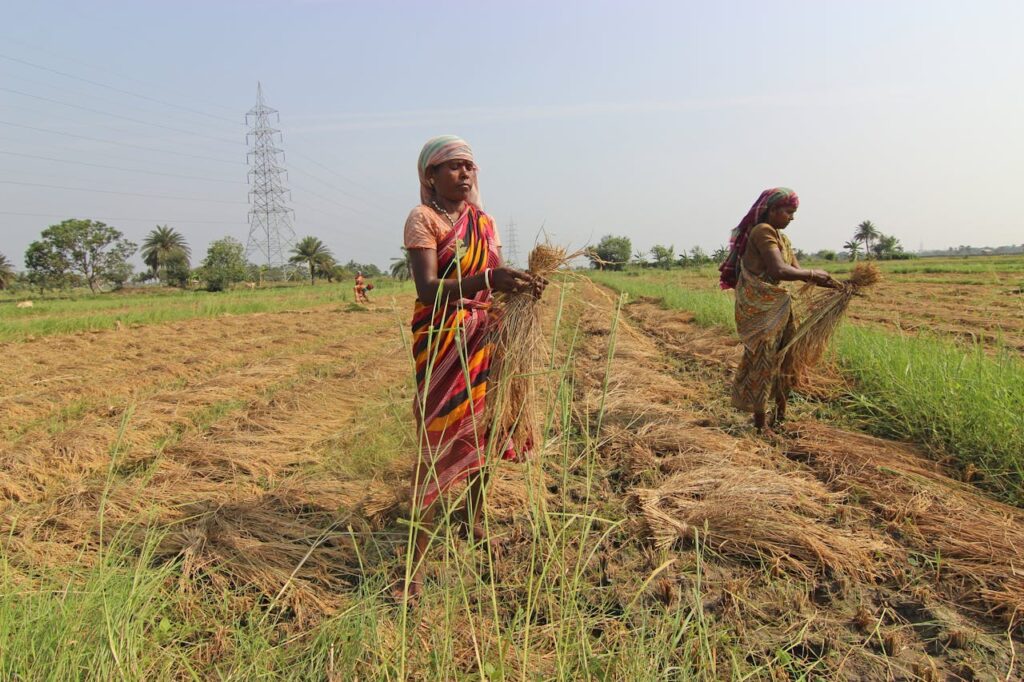FAO is preparing for the International Year of the Woman Farmer in 2026 to honour women’s roles in ensuring food security, improving nutrition, and reducing poverty. This will provide a platform for implementing effective policies and measures to address the difficulties women farmers face in agrifood systems. Their challenges were highlighted in the latest FAO report that highlighted constrains such as limited property rights and land tenure, restricted access to improved seeds, fertilisers, extension services, credit, markets and mechanised markets, as well as insufficient technical and educational support for women.
We had the pleasure of speaking to Anna Arvidsson – a cattle breeder from Köping, Sweden – about the significance of such a year. She emphasized how women’s achievements in the agriculture industry can inspire and motivate younger generations to have the courage to invest and believe in themselves and the confidence to pursue their dreams.
The declaration of the International Year provides a major opportunity for a worldwide pledge to address long-standing inequalities, ultimately bolstering food security, fostering economic well-being, and promoting gender equality within agrifood systems. SIANI hopes that 2026 will be more substantive than symbolic, leading to long-term change rather than offering only temporary attention.
Women farmers are vital to agriculture worldwide. They are involved in cultivating crops, managing livestock, and ensuring household food security. However, they still face gender-based constrains: their work is still invisible and they have fewer resources and opportunities than men. As Anna points out, “Many times, physical strength is good, and often men have more of it than women. But when we don’t have the physical strength, we have our brains that us women are good at using.” Women do not need to be superwomen to succeed in farming. Today, numerous machines and tools can assist them in their daily tasks, enabling them to leverage their intelligence and skills effectively.
A review article on the economic benefits of empowering women in agriculture reveals that 25 out of 53 studies demonstrate higher productivity for female-managed or -owned plots, female farmers, or female-headed households compared to their male counterparts.
Globally, women make up more than 43 per cent of agricultural workforce, increasing to 60 per cent in low-income countries. Despite this, they encounter significant discrimination in terms of land and livestock ownership, equal pay, participation in decision-making processes, and access to credit and financial services.
In sub-Saharan Africa, nearly half of agricultural workers are women. However, they produce between 13 percent (Uganda) and 25 percent (Malawi) less than male farmers. Despite their significant presence in farming, women often face obstacles in land ownership, with less than 15 per cent of women being agricultural landholders worldwide. Research suggests that securing land rights for women can lead to better outcomes for them and their families, impacting food security, reducing gender-based violence, and improving children’s education, health, and food security. Additionally, female farmers lack access to credit, fertilizers, pesticides, farming tools, extension services, and markets, all essential for their productivity. Rural women also have limited access to technology, such as mobile phones and the internet, making them 10 per cent less likely to own a mobile phone and 23 per cent less likely to use mobile internet in low- and middle-income countries compared to men.
Financial and market constraints are major barriers to gender equality. Limited financial resources hinder women’s access to rural development opportunities. To address this issue, it is essential to facilitate access to finance and control over resources, such as technology and agricultural inputs. Also, systemic biases and social norms often prioritize men’s education and training, leaving women at a disadvantage. As Anna reflects on her experience, she notes that “when adult interns, trainees, and students come from countries where women are not highly valued, the men find it very difficult to accept a woman as a supervisor. Conflicts easily arise that are often hard to handle.” This highlights the importance of promoting equal rights for women and men to access training, education, technology, and resources for adopting new farming techniques and increasing productivity.
Anna acknowledges her limitations in her own role by saying, “I’m not the best at repairing and building, but I do my best. I would not want to run or operate this company without my husband, because we complement one another pretty well.” This statement underscores the value of collaboration and mutual support in overcoming gender-related challenges in the workplace.
Social protection schemes are equally important. According to the FAO report ”The unjust climate: Measuring the impacts of climate change on rural poor, women and youth” the on-farm income of poor rural households decreases by 2.4% with every day of extreme heat compared to non-poor households. Compared to men, the total value of crops produced by women farmers is reduced by 3% each day of extremely high temperatures. By integrating social protection with climate financing, we can create a supportive environment that empowers farmer women to undertake climate-adaptive practices and reduces their reliance on maladaptive coping strategies that can entrench poverty and food insecurity.
Celebrating the International Year of the Woman Farmer in 2026 will benefit not only women farmers but also enhance food security, drive economic prosperity, and advance gender equality worldwide. While UN International Days effectively raise awareness and mobilize support, their impact on lasting change can vary. The challenge is to transform this temporary focus into sustained action and tangible results.
